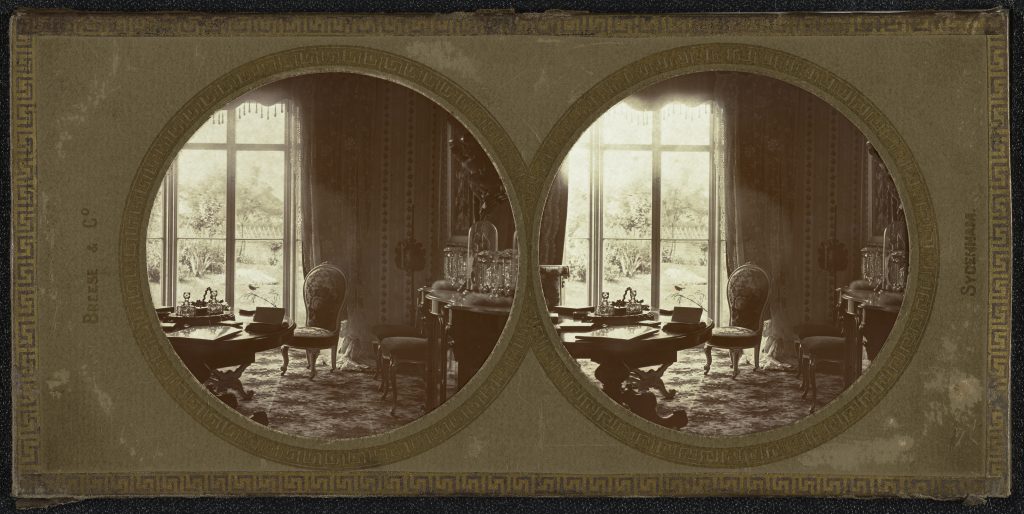I do not remember the first time I tried on a pair of glasses. I know that it was the summer of third grade, and in pictures, the glasses are small and delicate. My bad eyesight was due to a penchant for reading books all the time, in bad lighting, usually because I should have been in bed. When I put on my glasses, there was no sudden burst of clarity. Maybe the words on the chalkboard became easier to read, but I certainly didn’t have any epiphanies. I did not, like Dr. Hahn on Grey’s Anatomy, go through the joy of finding out that the blotches of color on the trees were leaves. The glasses were simply slipped on and life continued as normal.
Now, at twenty-three, my vision is truly terrible, a fact that has remained largely secret because I never leave the house without my contacts. My right eye requires a -6.50 prescription, my left eye, only slightly less awful at -6.00. When I try on my boyfriend’s glasses, they feel flimsy on my nose. My glasses are so heavy and bulky that the lenses don’t fit the frames and the nose clips press deep, red marks into my bridge. I used to be able to count on one hand the number of people who have seen me in my glasses. They used to be part of a private uniform.
But, for the past two weeks, I have been nursing a corneal infiltrate in my right eye. A fairly common occurrence for contact wearers, the infiltrate can form if the user tends to wear her contacts overnight (not guilty), or, though this is rarer, if the user has worn her monthly contacts for over three months in the attempts to be thrifty and game the system. The infiltrate looks like a greyish dot in the outer circle of my cornea, and it has turned my eye into a red-veined, weeping nightmare that practically hisses when it comes into contact with sunlight. I have to put medicated eye drops in four times a day, and then, for half an hour afterward, I’m dabbing the leaking corner of my eye, which makes me feel like an old dog. Worst of all, I’ve been ordered to wear my glasses until the infiltrate clears up.
In my glasses, I feel instantly more vulnerable. If someone were to knock the glasses off my face, or just run up and steal them, I would be helpless. With contacts, I can pretend that I’m normal—someone would have to reach into my eye and pinch the soft lens in order to incapacitate me, and by then, I imagine I would already be incapacitated. The world feels one degree of separation apart from me. I am constantly reminded, by the weight of my glasses, by the blurred peripheral vision that lies just beyond the reach of my frames, by the presence of the frames themselves in the corner of my eye, that I am not actually seeing the world. That the world is being filtered through a screen. One that focuses and sharpens and clarifies, but nevertheless is outside of me.
I convince myself that if I cannot really see the world, the world cannot really see me. It is a reaction both aggressive and passive, one that allows me finally to walk with my head up, but also one that makes me feel invisible and ghostly. I stare at people without meaning to, but also without apology. I make eye contact with strangers. “I could get used to this,” I start to think, as I blithely make my way down the street, wielding my gaze with abandon.
But when I see my friends and classmates, I shrink back and I make jokes about my glasses, calling attention to them frequently. I don’t know why I am self-conscious. Whereas I feel the world looks past me when I’m wearing glasses, allowing me to watch the passing scenes as if through a television, the people who already know me are seeing a magnified version of myself. I am a watcher, not a doer, is what my glasses symbolize. I require help, and so much help, to take the world in; I have been faking perfect vision, and therefore perfect presence, the entire time these people have known me. The truth is, I ruined my sight, and I am ruining it still because instead of seeing the world, I squint at it. I pay attention to tiny, eye-degrading words, and not to colors and faces and leaves. I wear contacts and can pretend I’m not, first and foremost, interested in books, in watching people rather than talking to them.
When I was finally allowed to put my contacts back in, my doctor left me in his office for ten minutes in order to let me “get used” to them again. As soon as I slipped them in, the clear polymer attaching easily and lovingly onto the surface of my eye, the world rushed up and swooped over my head. I had to sit down, I was so dizzied by the total sight I’d re-received. Even now, as I type this piece, I have to rest my eyes every few minutes. I’ve been much happier and livelier in the days since I’ve gotten my contacts back. More social. A better drunk. But there is a moment of relief at the end of the day when I can put my glasses on. When I can sit back and just watch the world go by.
Image: Breese & Co. “The Robin,” about 1860, collodion-on-glass. 6.4 x 6.4 cm (2 1/2 x 2 1/2 in.). The J. Paul Getty Museum, Los Angeles.




